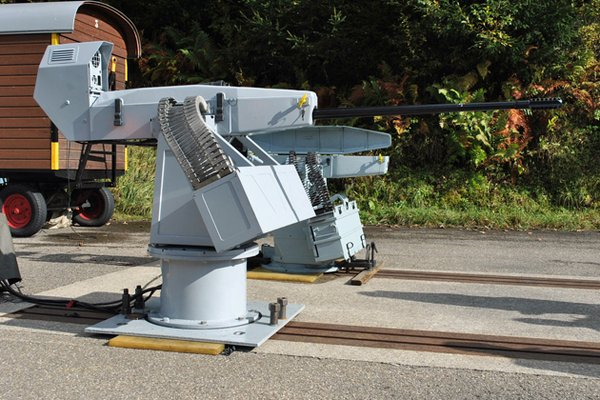MARITIME SECURITY
Searanger naval cannon qualification near 21st October 2015

A new remote-controlled 20mm naval cannon manufactured by the air defence arm of Rheinmetall Defence will be qualified and ready for sale by the end of the year, company officials have said.
The Searanger 20 is currently going through manufacturer trials to test components such as the electronic trigger mechanism and the weapon’s control unit.
Customer firing demonstrations took place at Rheinmetall’s testing facility in Studen, Switzerland on 20 October with several nations attending.
The fully-stabilised system shares components with the manually-operated GAM-B01 20mm weapon, which is still in service with navies worldwide, including the Royal Navy.
Craig McLoughlin, senior VP for naval systems at Zurich-based Rheinmetall Air Defence, told Shephard that the company was now around ‘two-thirds’ through the qualification phase.
Two prototype systems are currently being used for the trials.
‘The cannon is already qualified so all we have to do is the qualification firings for the remote trigger device, and the cannon control unit,’ McLoughlin explained.
Weighing around 570kg fully loaded with 200 rounds, the remote-weapon system is being promoted as a primary weapon for patrol boats as small as 23m and an option to replace less powerful 12.7mm (50 .cal) weapons on larger craft.
‘They need a more powerful cannon and of course with a 20mm like this, it’s a quantum leap,’ said McLoughlin.
It is designed primarily to counter asymmetric and unconventional threats including fast inshore attack craft (FIAC) and has a range of 2,000m.
This is expanding the potential market for the weapon system beyond traditional naval customers. The company predicts success with coast guards, interior ministries and border patrol agencies.
‘I expect that we will close at least one contract this year and we’ve got at least another half dozen in the pipeline, we will probably see a couple more next year. They are really different customers to what we usually work with,’ he said.
The current sensor for the system is the OBA-150L, a day/night camera and laser range finder mounted above the barrel. This is teamed with the Vingmate fire control system, which increases the possibility of hitting the target with the first shot.
The weapon is controlled from a remote station that can be situated up to 100m away from the gun itself. Firing modes include single shot, rapid fire at 200 rounds-per-minute and full burst mode at 1,000 rounds-per-minute.
Mike Gerber, product manager for naval guns at Rheinmetall Air Defence, said that unlike legacy cannons, the electronic trigger allows the operator to fire a precise number of rounds in rapid-fire mode.
‘You can also implement safety functions that were not possible before…for example you can give stop fire switch to the captain so that he can decide when to fire,’ he added.
Rheinmetall Air Defence has also developed a new type of 20x128mm ammunition to fire from the weapon, called SAPPIE-T (semi-armour piercing pyrotechnically induced effect and tracer). The round has armour piercing capabilities but does not contain explosives or a fuse, meaning it is much safer to handle.
The SAPPIE-T round is also expected to be qualified by the end of year with officials stating that the cost will be ‘significantly less’ than legacy HE rounds.
http://www.shephardmedia.com/news/imps-news/Cumprimentos